The Vital Importance of E-commerce Website Design in the Digital Age
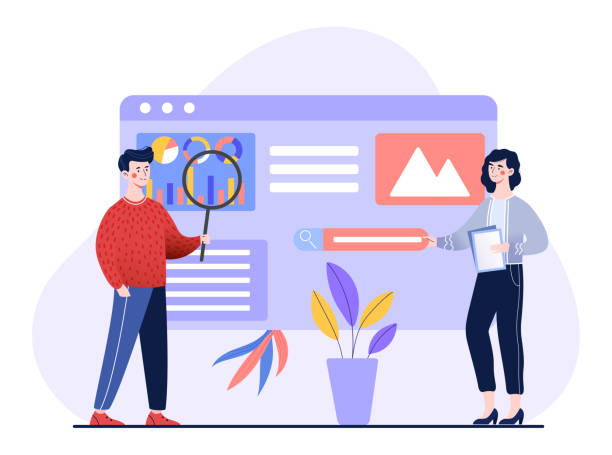
In today’s fast-paced world, an online presence is an undeniable necessity for every #online_business.
E-commerce website design is not just a luxury option; it is the backbone of your #online_store in the #digital_market.
This website is not only a showcase for your products but also a platform for direct interaction with customers, providing after-sales services, and collecting valuable data for continuous improvement.
Consider a potential customer searching for a specific product; if they cannot easily find you online, they will quickly be directed towards competitors.
Therefore, investing in a professional e-commerce website design means investing in the future of your business.
This section explains the importance of this topic and introduces its various aspects.
A strong and user-friendly platform not only increases sales but also builds customer trust and solidifies your brand in their minds.
Without an effective #business_website_design strategy, competing in the online market will be almost impossible.
It should be noted that an efficient online store acts like a 24-hour branch of your business, providing access to customers worldwide without geographical and time limitations.
This platform allows for the precise and attractive display of products, offering discounts and special promotions, and creating an easy and enjoyable shopping experience.
This introduction demonstrates why developing an online sales platform is the beating heart of every successful e-commerce business.
Does your current website build the trust that potential customers should have in your business? If the answer is no, it’s time to have your professional and impactful corporate website with Rasaweb.
✅ Fully custom design tailored to your brand identity
✅ Increased lead generation and business credibility in the eyes of customers⚡ Contact us for a free consultation!
Choosing the Right Platform: A Crucial Step in Building an Online Store

After understanding the importance of e-commerce website design, the next and perhaps most crucial step is choosing the right platform.
This section provides guidance and training for this vital choice.
Numerous options exist in the market, each with its own advantages and disadvantages.
Platforms like WooCommerce, which is a WordPress plugin, offer high customization freedom but require more technical knowledge.
In contrast, Shopify is a hosted solution that is easier to use and ideal for beginners, but it may offer less flexibility for deep customizations.
Magento is also suitable for large businesses with complex needs, offering tremendous power and scalability, but it is more difficult to learn and manage.
The choice of platform depends on your budget, technical knowledge, product volume, and long-term business goals.
Are you looking for a quick, ready-made solution, or do you want complete control over all aspects of your e-commerce site? These are fundamental questions you must answer before starting e-commerce website design.
Additionally, technical support, security, SEO capabilities, and the ability to integrate with other tools (such as CRM systems or email marketing) are among the factors to consider when choosing a platform.
An informed choice can save you a lot of costs and problems in the future and double the growth rate of your business.
Remember that each platform has its own ecosystem, and a thorough understanding of them is essential for success in online store development.
Key Steps in Successful E-commerce Website Design

After choosing the platform, it’s time for the specialized and educational stages of e-commerce website design.
This process begins with meticulous planning and continues through launch and support.
First, there’s the planning and market research stage, which includes defining target audiences, analyzing competitors, and setting business goals.
In this stage, the overall roadmap for your website takes shape.
Next, is the User Interface (UI) and User Experience (UX) design stage, where the site’s appearance and how users interact with it are designed.
The goal is to create an easy and enjoyable purchasing path for customers.
The subsequent stage is development and coding, where design ideas are transformed into actual code.
This involves implementing features, connecting to payment gateways, and managing the product database.
After development, it’s time for testing and optimization.
In this stage, the site is examined for performance, security, and compatibility with various devices to identify and resolve any potential bugs and issues.
Finally, there’s the launch and support stage, where your site becomes publicly accessible, and continuous support is provided for troubleshooting and updates.
Below is a table of the key steps in building an online store:
| Stage | Description | Main Focus |
|---|---|---|
| 1. Planning & Research |
Defining goals, competitor analysis, audience understanding | Strategy and Roadmap |
| 2. UI/UX Design |
User interface and user experience design | User-friendliness and Visual Appeal |
| 3. Development & Coding |
Implementing features and functionalities | Technology and Performance |
| 4. Testing & Optimization |
Performance, security, and compatibility review | Bug fixing and Quality Assurance |
| 5. Launch & Support |
Public release and continuous maintenance | Stability and Growth |
Adhering strictly to these stages will ensure an effective and efficient e-commerce website design.
Why are User Experience (UX) and User Interface (UI) Design Vital for E-commerce Websites?

After understanding the stages, it’s time for one of the most specialized and crucial aspects of e-commerce website design: User Experience (UX) and User Interface (UI) design.
These two concepts, though often confused, complement each other and play a significant role in the success of an e-commerce business.
UI refers to the look and feel of your website; colors, fonts, images, and the layout of visual elements.
UX, however, goes beyond appearance and addresses the user’s feeling when interacting with your site; Is navigation easy? Is the purchasing process straightforward? Is information easily found? A strong UX design in e-commerce website design means creating a friction-free purchasing path.
This includes simple and logical navigation, fast page loading times, responsiveness for various devices (mobile, tablet, desktop), and optimized registration and purchase forms.
An attractive and visually pleasing user interface leaves the first impression on visitors and encourages them to stay on the site.
But it is the user experience that ensures a visitor becomes a loyal customer.
For example, if a user struggles to find their shopping cart or if the payment steps are complicated, they will quickly leave the site.
Focusing on these aspects, especially in e-commerce website design, is essential for increasing conversion rates and reducing cart abandonment rates.
This analytical perspective helps your website to be not only beautiful but also functional and profitable.
Ultimately, an unparalleled user experience can make the difference between an ordinary online store and a popular brand.
The importance of these two elements in online sales platform development is undeniable, as they directly affect customer satisfaction and profitability.
Are you frustrated by your e-commerce site’s low conversion rate? Rasaweb transforms your e-commerce site into a powerful tool for attracting and converting customers!
✅ Significant increase in visitor-to-buyer conversion rate
✅ Unparalleled user experience to boost customer satisfaction and loyalty⚡ Get a free consultation from Rasaweb!
SEO for Increased Online Store Visibility: More Vital Than Ever
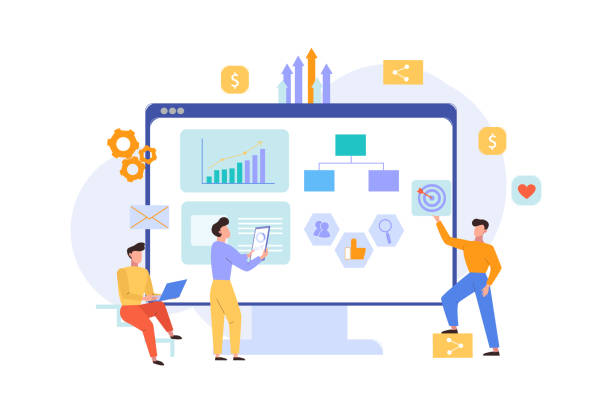
After creating a beautiful and user-friendly e-commerce website design, the next and extremely crucial step is ensuring its visibility.
This is where Search Engine Optimization (SEO) comes into play.
SEO is a set of techniques and strategies that help your site achieve higher rankings in Google search results and other engines, attracting more organic (free) traffic.
This section provides an analytical guide to various aspects of SEO for online stores.
Keyword research is the first step in SEO for any online store.
You need to know exactly what your customers are searching for and then optimize your site’s content based on those keywords.
This includes keywords for product pages, categories, and blog articles.
On-Page SEO involves optimizing titles, meta descriptions, URLs, images (using appropriate alt tags), and textual content of pages.
Ensuring that each product page has accurate and unique descriptions is very important.
Off-Page SEO includes building links from other sites (backlinks) to your site, which indicates your site’s credibility and importance from the search engines’ perspective.
Creating high-quality and shareable content is one of the best ways to attract backlinks.
Site loading speed, mobile compatibility, and having an SSL certificate are also important ranking factors directly related to your e-commerce website design.
Ignoring SEO means ignoring a large portion of your potential customers.
Therefore, from the very beginning, you should consider SEO as an integral part of your e-commerce site development process.
Essential Features of a Successful E-commerce Website for a Seamless Shopping Experience

A e-commerce website design is not limited to just a beautiful appearance and search engine visibility; it must provide a set of essential features to offer customers an unparalleled shopping experience.
This section explains these key features.
Powerful product management is among the most important of these features, allowing you to easily add, edit, and categorize your products.
This includes the ability to add high-quality images, comprehensive product descriptions, SKUs, inventory, and various pricing options.
An easy shopping cart and checkout process are other vital features.
Customers should be able to easily add products to their cart and complete the payment process in a few simple and uncomplicated steps.
Integration with secure and diverse payment gateways (such as credit cards, online payments, and card-to-card transfers) is also essential.
An order management system that allows you to track and process orders is also of high importance.
Diverse shipping options are another key feature; offering various delivery options with different costs and delivery times increases customer satisfaction.
A robust customer support system (such as online chat, ticketing system, and contact number) is essential for answering customer questions and resolving issues.
Additionally, the ability for users to review products, an advanced search system, and a personalized user panel for customers all contribute to improving the user experience and increasing customer loyalty.
These optimized features are an inseparable part of a successful e-commerce website design that not only helps increase sales but also enhances your brand’s credibility.
Common Challenges and Solutions in Launching an Online Store
![]()
Launching an e-commerce website design, while full of opportunities, also comes with challenges. Awareness of these and finding appropriate solutions can smooth your path to success.
This section provides thought-provoking and analytical content that examines these obstacles and offers solutions.
One of the biggest challenges is fierce competition in the online market.
With the increasing number of online stores, visibility and differentiation become more difficult.
The solution is to focus on a specific niche, highlight your Unique Selling Proposition (USP), and emphasize unparalleled customer service.
Another challenge is technical and security issues.
Maintaining a website, fixing bugs, and protecting customer information can be complex.
Using reputable platforms, regular updates, and strong SSL certificates are security solutions.
Attracting traffic and converting it into sales is always a challenge.
Simply having an e-commerce website is not enough; you need strong digital marketing strategies (SEO, content marketing, paid advertising).
Inventory and logistics management can also be a nightmare, especially for businesses with a high variety of products.
Using inventory management software and collaborating with reliable shipping companies reduces this challenge.
Finally, customer support and feedback management are also of high importance.
A dissatisfied customer can quickly spread their negative experience online.
Setting up online chat systems, prompt responses, and professional complaint management helps resolve this challenge.
Below is a table of common challenges and suggested solutions in e-commerce website design:
| Challenge | Solution | Example |
|---|---|---|
| Fierce Competition | Focus on niche market, strong USP | Selling organic handmade products |
| Technical & Security Issues | Choose reputable platform, regular updates, SSL | Using Shopify, installing security plugin |
| Attracting Traffic & Sales | SEO, content marketing, targeted advertising | Writing blog posts, Google Ads campaign |
| Inventory & Logistics Management | Inventory management software, courier partnership | Using ERP, contract with national post |
| Customer Support | Online chat, quick response, CRM | Using Zendesk, 24/7 response |
With an informed and strategic approach, these challenges can be overcome, leading to success in online store development.
Security in E-commerce Website Design and Customer Data Protection
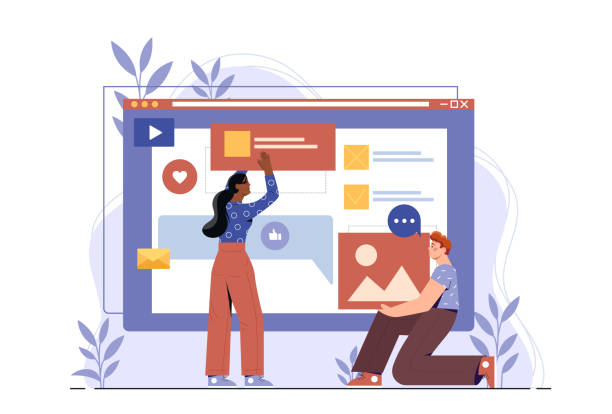
One of the most important aspects of e-commerce website design that should never be overlooked is security.
This specialized section examines the importance of security and solutions for protecting sensitive customer information.
Given the high volume of financial transactions and personal information exchanged on an online store, any security breach can lead to loss of customer trust, financial damages, and even legal repercussions.
SSL (Secure Sockets Layer) certificate is the first and most fundamental step in ensuring security.
This certificate encrypts the communication between the user’s browser and your website server, preventing the interception of sensitive information such as bank card numbers and passwords.
A site with a valid SSL is identified by a green padlock icon in the browser’s address bar, assuring customers.
Payment gateway security is also vital.
You must use reputable payment gateways that comply with PCI DSS standards, ensuring the security of financial transactions.
Regular updates of the platform and plugins are another way to prevent vulnerabilities.
Hackers are constantly searching for weaknesses in outdated software.
Using strong passwords and enabling two-factor authentication (2FA) for the admin panel are also essential.
Regular data backups prevent information loss even in the event of an attack or system failure.
Investing in strong firewalls and Intrusion Detection Systems (IDS) is also recommended for an e-commerce website design with high traffic volume.
Finally, staff training on cybersecurity principles and identifying phishing attacks can also be an important defense layer.
These measures not only protect your and your customers’ information but also increase trust and loyalty among your customers.
Are you bothered by losing customers who have visited your site to buy?
Rasaweb is your specialized solution for having a successful online store.
✅ Significant increase in your online sales
✅ Building trust and professional branding with customers⚡ Get a free consultation from Rasaweb experts!
Digital Marketing After Launching an Online Store
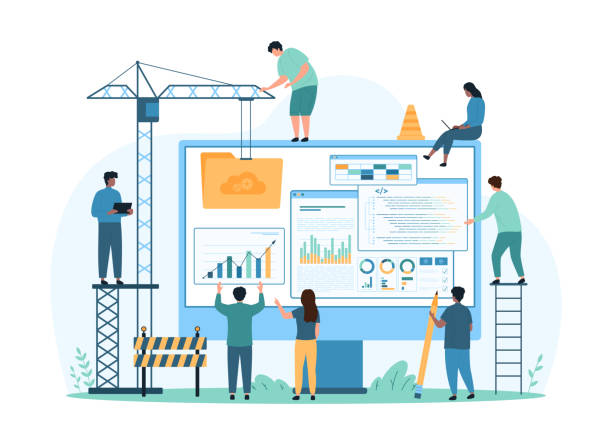
Congratulations! Your e-commerce website design is complete and ready to welcome customers.
But the story doesn’t end here.
For true success, you need a strong digital marketing strategy to drive traffic to your online store and boost sales.
This informative and engaging section explores key post-launch marketing methods.
Content Marketing is one of the most effective ways to attract organic traffic and build credibility.
By creating a blog, writing informative articles, buying guides, or even entertaining stories related to your products, you can attract your target audience.
Social media marketing is another powerful tool.
An active presence on platforms like Instagram, Telegram, Facebook, and LinkedIn allows you to connect with customers, showcase your products, and run targeted advertising campaigns.
Paid Advertising such as Google Ads and social media advertising can quickly increase traffic and sales for your e-commerce website.
These methods allow you to precisely target specific audiences.
Email Marketing is also very effective for maintaining communication with existing customers and encouraging repeat purchases.
Collecting emails through newsletters or special offers and sending promotional emails, discounts, and updates can increase customer loyalty.
Influencer collaborations and affiliate marketing are also new and effective strategies in online store development.
Combining these strategies with an optimized e-commerce website design can significantly help you achieve your marketing and sales goals.
Remember that digital marketing is a continuous process and requires constant analysis, optimization, and updates.
Product and Service Variety Offered on an E-commerce Website
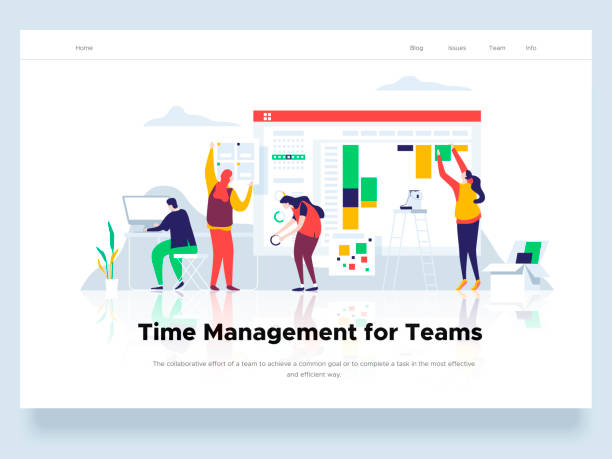
One of the main pillars of success for any e-commerce website design is not only the quality of the website structure but also the variety and quality of products it offers.
This section explains the importance of product and service diversity in online stores.
An online store with a high product variety can cater to a wider range of customer needs and increase the chance of converting visitors into buyers.
This variety can include offering products from different categories, or even providing products in various price ranges to accommodate different budgets.
For example, a clothing store can offer accessories, shoes, and even garment care products in addition to clothing to provide a complete shopping experience.
Also, providing ancillary services can add to your value proposition.
These services might include extended warranty, installation services, free product consultation, or even gift wrapping.
For a successful e-commerce website design, it is important to note that every product or service offered must be of high quality and accompanied by precise descriptions.
High-resolution images and product videos can help customers make better decisions.
Additionally, the user review system plays an important role in building trust and transparency.
This section can also include entertaining content or educational content on how to use products or their benefits.
A strong content management on an e-commerce website helps you showcase this variety in the best possible way and organize information so that it is easily accessible to customers.
This strategy turns your online sales platform into a comprehensive resource for customers, encouraging them to return.
Frequently Asked Questions
| Question | Answer |
|---|---|
| What is an e-commerce website? | A website that enables online buying and selling of goods or services. |
| What are the main features of a good e-commerce website? | Easy user interface, product categorization, shopping cart, secure payment gateway, search and filter capabilities. |
| What are the common platforms for e-commerce website design? | WordPress (WooCommerce), Shopify, Magento, PrestaShop, etc. |
| Why is responsive e-commerce website design important? | For proper display on various devices (mobile, tablet, desktop) and to improve user experience and SEO. |
| What are the benefits of having an e-commerce website? | 24/7 customer access, reduced operating costs, access to a wider market, customer data collection. |
And other services of Rasaweb Advertising Agency in the field of advertising
Smart Conversion Rate Optimization: A dedicated service for growing user engagement based on Google Ads management.
Smart Marketing Automation: A novel service for improving SEO ranking through key page optimization.
Smart Social Media: Professional optimization for customer attraction using attractive UI design.
Smart Custom Software: A fast and efficient solution for improving SEO ranking with a focus on custom programming.
Smart SEO: A combination of creativity and technology to increase sales by customizing the user experience.
And over hundreds of other services in the field of internet advertising, advertising consulting, and organizational solutions
Internet Advertising | Advertising Strategy | Advertorials
Sources
E-commerce Website SEO Training Choosing an E-commerce Platform Important E-commerce Website Design Tips Increasing Online Sales
? Are you ready to take your business to new heights in the digital space? Rasaweb Afarin Digital Marketing Agency, with years of experience in providing innovative solutions, including WordPress website design, SEO, and advertising campaign management, is your partner on the path to success. With us, your business future is brighter.
📍 Tehran, Mirdamad Street, next to Central Bank, Southern Kazeroun Alley, Ramin Alley, No. 6

